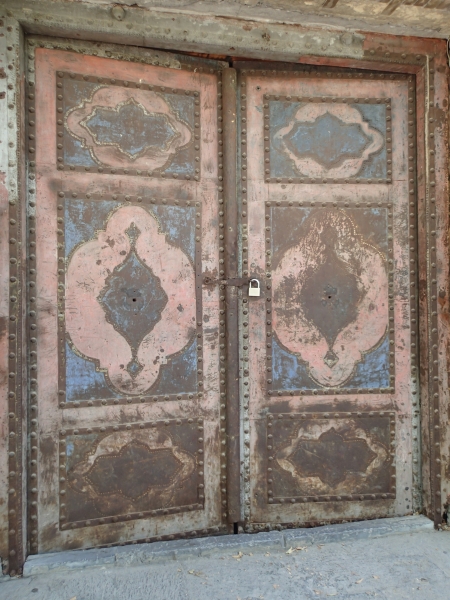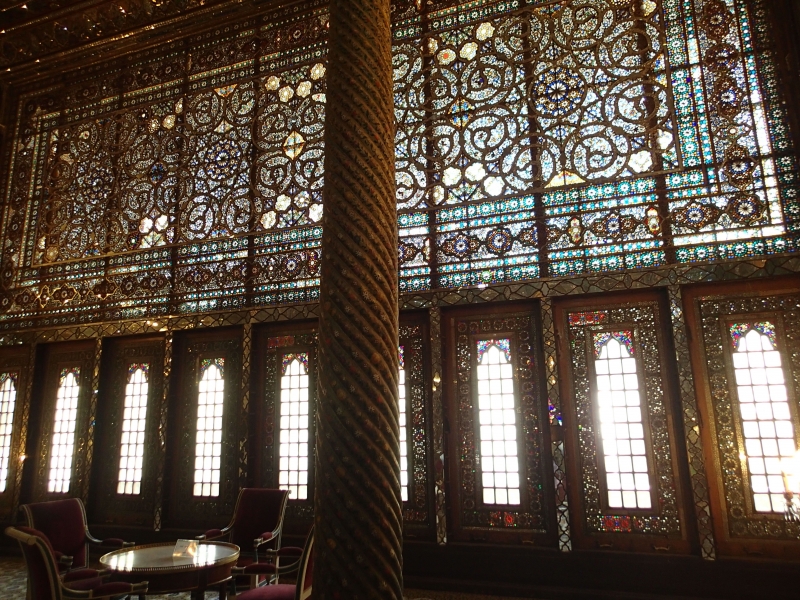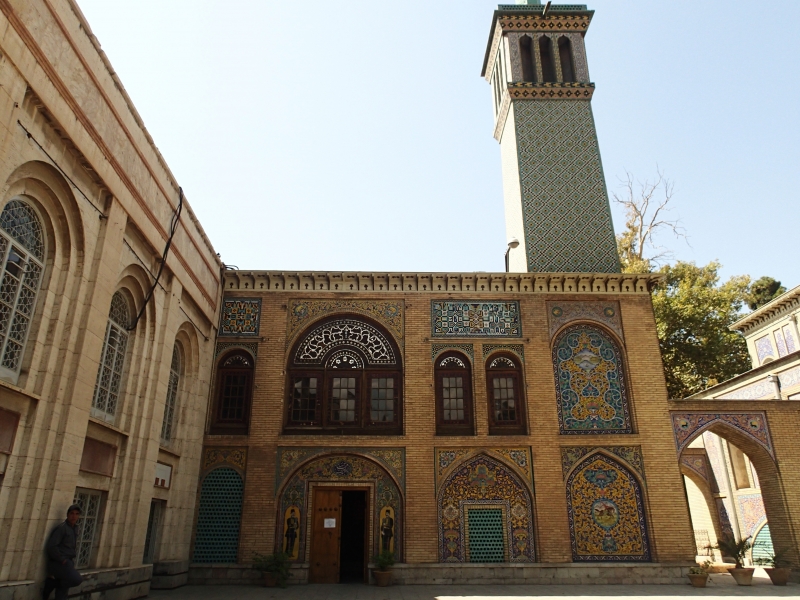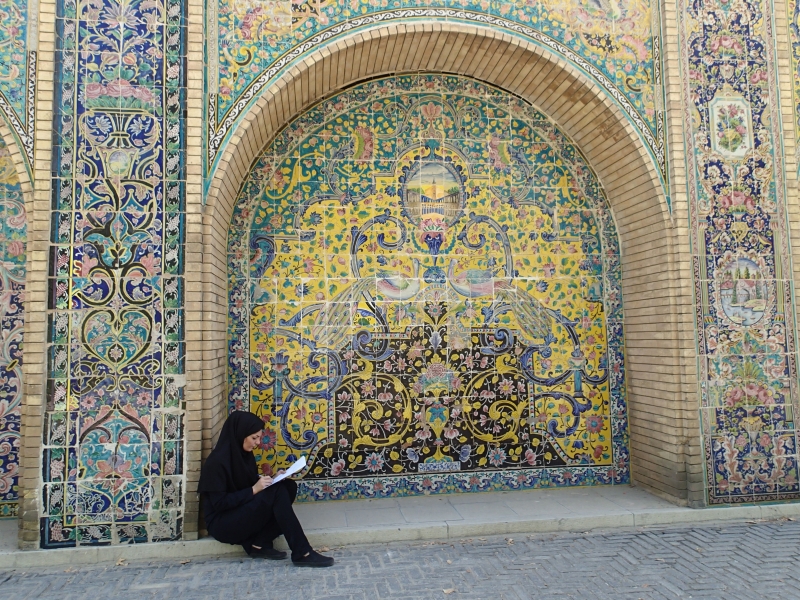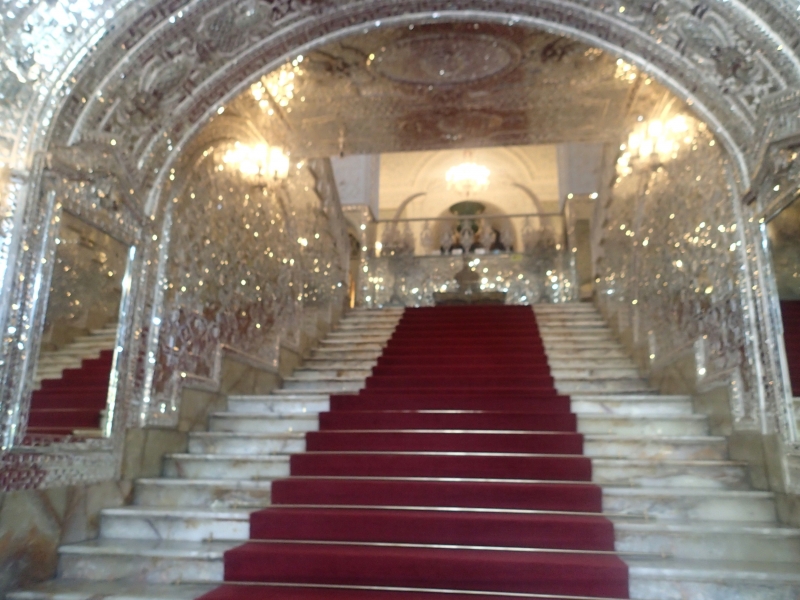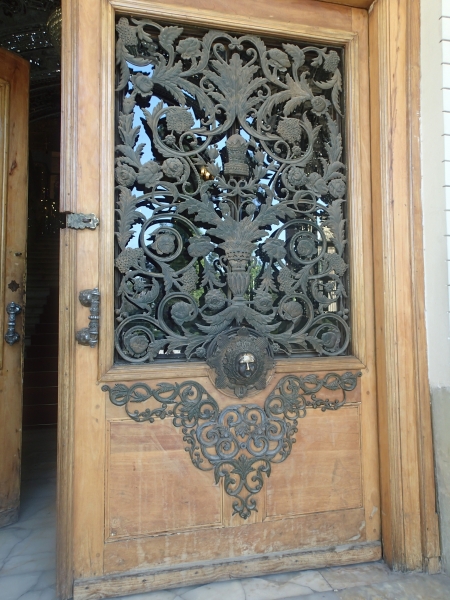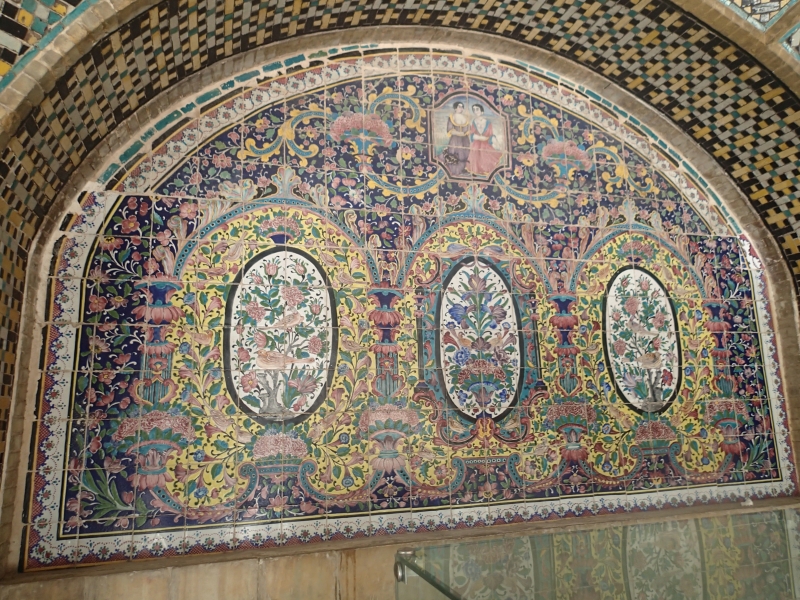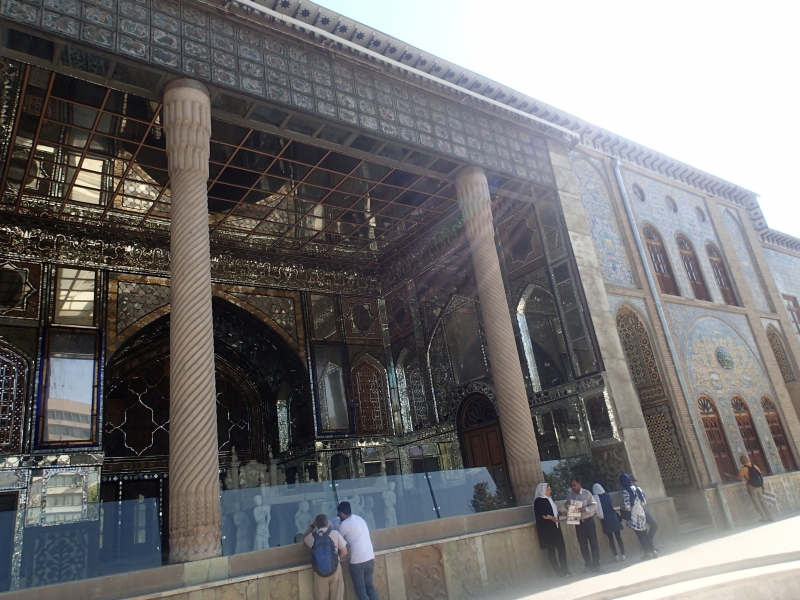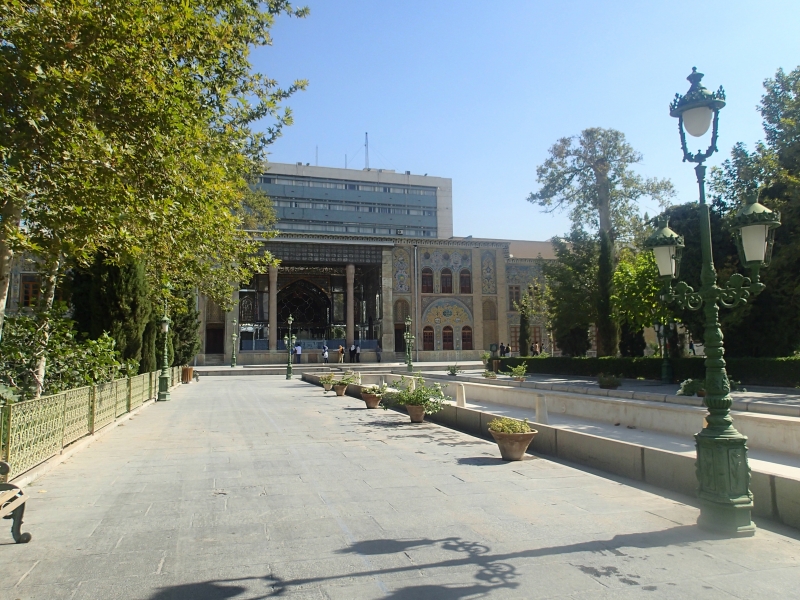We booked a 4 hour tour (US$60 each) of Hidden Terhan with Uppersia Tours. Our guide, Nerjes, was already waiting for us in the hotel lobby just before 9.00am. We caught a taxi (150,000 IRR) downtown and commenced our walking tour starting with the UNESCO World Heritage listed, Golestan Palace.
The Golestan Palace (Palace of Flowers) is about 400 years old and was the official residence of the Royal Family when Tehran became the capital. It is in Panzdah Kordad Square and is the oldest historic monument in Tehran. It belongs to a group of buildings once enclosed within mud-thatched walls of the Arg (citadel) built during the reign of Talimash I of the Safavid dynasty (1502 – 1736). Golestan Palace complex has 17 structures in all including , public and private palaces, museums and halls. Most of it was built during the 200 years of the Qajarian Dynasty.
The main building is covered in beautiful tiles, marble (with Stucco work) and mirrors…..very impressive. We saw the artwork of the tiles in the building and she explained to Vince the symbolism. Moving past the Takht-e Marmar (Marble Throne), in the middle of a spectacularly decorated terrace (iwan), we could see it was surrounded by elaborate paintings, marble carvings, tile work, stucco, mirrors, enamel, woodcarvings and lattice windows. It was build in 1806 by order of Fath Ali Shah Qatar (1797-1834) and they used 65 pieces of special yellow marble from Yazd. It was used for coronations of Qatar Kings and formal court ceremonies. The last King to have his coronation there was Reza Khan Pahlavi (r. 1925-1941) in 1925. (Note the coronation of Mahammad Reza Pahlavi (r. 1941-deposed 1979) was in the Museum Hall not the Marble Throne.)
In the Khalvat-e Karim Khani (cosy corner of previous residence terrace) there is a small pond with a fountain in the middle of the trace and water from a subterranean stream flowed from the fountain into the pond via gravity. We also saw the magnificently carved, one piece marble tomb bearing the effigy of Naser al-Din Shah. He was assassinated by Mirza Reza Kermani, when he was visiting and praying in the shrine of Shah-Abdol-Azim. An old rusty revolver was used and it is through he might have survived if his clothing was thicker or the shot was at a longer range. Naser al-Din was originally buried in the Shah-Abdol-Shrine (where he died), in Rayy, near Tehran but is now at the Golestan Palace.
Next we visited the Talar-E Aineh (Hall of Mirrors)…unfortunately we were not allowed to take photographs here….I guess if you did you would be “fed” to the lions out the front guarding the impressive doors. It is famous for its exquisite, and extraordinary mirror work…..it was unbelievable the intricacy of the jigsaw of mirror work that filled the rooms, scubas the Talar-e Berlin, famous for its mirror work and chandeliers. We also had to put coverings over our shows to go in. Upstairs in Talar-e Salam (Reception Hall) which has mosaic floors, we saw replicas of the famous Takht-e Khurshīd (Sun/Peacock) throne which is like a platform and a smaller throne I can’t remember the name of (Nadir Throne) more like a chair. At the bottom was an animal that I thought was a leopard or cheata …Narjes said it is supposed to be a tiger to show power….but she thought it was really a cheata…..because Iran has Cheata, Zebra and Bears…..I was astounded by this. Another Hall, the Talar-e Adj (Hall of Ivory) I think, was a dining room and hosted models of 4 of the Kings. In a separated room was a model of with a model of Naser al-Din Shah with a model of a famous painter painting him. We saw many gifts from other countries to the Kings in the Talar-e Salam, including an impressive China collection in the Talar-e Zoroof. Vince was more interested in the meteorite that was in a glass case.
We walked along and went into the Sahm-ol-Ebareh (Edifice of the Sun) and in its time was an amazingly tall structure (5 floors) built in the time of Nasser-ol-Din Shah.It was built in 1865 and took 2 years to complete. Inside it was previously a private palace and it had lovely fireplaces.
Nerjes told us about the Emarat-e Badger (Buidling of the Wind Towers) which was constructed in the time of Fath Ali Shah (1806) but was renovated during the reign of Nasser-ol-Din shah. The building is flanked by two rooms known as goshvar (earrings). There is a central room with boasts the finest stained glass window in the Golestan Palace. Nerjes explained that the stained glass windows are special because the colours hurt the eyes of flies, so the windows can be open and no flies come in. Also, it has healing properties for babies due to the light they produce.
There are four wind towers of blue, yellow and black glazed tiles and a golden cupola. They draw the cooling wind down through the towers, through water chambers below and then cool the building through lower ducts. Nerjes explained that people in the desert areas such as Bam, Kerman and Yazd.
We passed the Chador-Khaneh (House of Tents) between the Badger and Almas Hall. It was used as a Royal warehouse for their tents….the Qatar Dynasty loved camping. These were grand trips with many servants so many tents were required.
We spent about an hour and a half there and it really was quite fascinating. In addition to information about the palace, Nerjes shared with us some information about arranged marriages in Iran and how things have adapted to accommodation tradition as well as individuals wishes today. She shared the story of her own recent courtship and marriage (its her 1st anniversary on Thursday)….we felt very privileged. Throughout the day she also shared her views on women, tourists and trends I had observed. She confirmed that the “french” influence comes from one of the Shah’s and his wife, who had studied in France….to the extent that some French words, such as “Merci” are commonly used in Iran. It was very interesting.
Afterwards we went to see some other sites….I will blog these separately.


